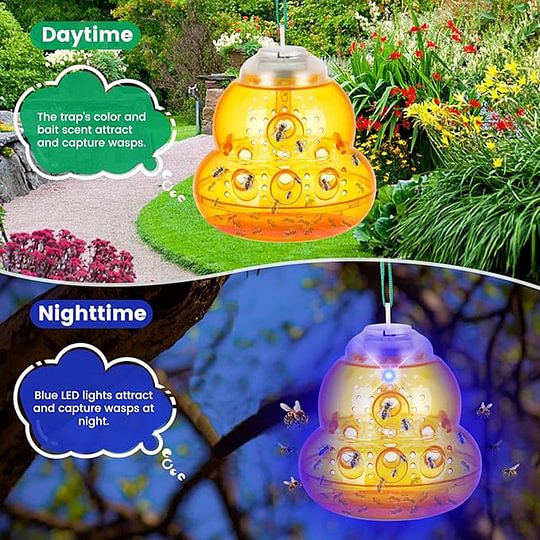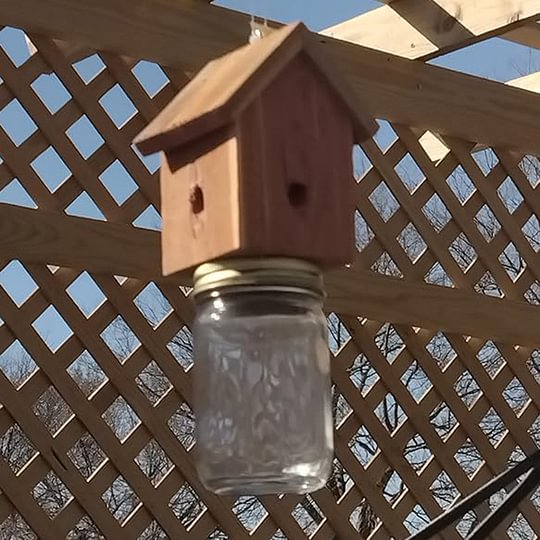Buzz Off! The Ultimate Guide to Crafting Effective Carpenter Bee Traps

As the warm weather arrives, many people look forward to spending time outdoors, enjoying the sunshine and fresh air. However, for homeowners, this season can also bring unwanted visitors: carpenter bees. These large, buzzing insects are known for their destructive nesting habits, drilling into wood and compromising the structural integrity of homes, decks, and furniture. If you've noticed these solitary bees buzzing around your outdoor spaces, it's time to consider effective ways to manage them. One of the most practical solutions is crafting your own carpenter bee traps.
In this guide, we will take you through the process of creating effective carpenter bee traps that can help you reduce their presence without resorting to chemical pesticides. By understanding the behavior of carpenter bees and learning how to attract and capture them, you can protect your property while also maintaining a harmonious relationship with nature. Let's dive into the materials and methods you need to make your very own carpenter bee trap and reclaim your outdoor space.
Understanding Carpenter Bees
Carpenter bees are large, solitary bees that can often be mistaken for bumblebees. They typically have shiny, black abdomens and a robust body structure. Unlike social bees, carpenter bees do not live in colonies but instead nest individually. https://www.carpenterbeetraps.shop/ are known for their distinctive nesting habits, as they drill holes into wood surfaces to create their homes. This behavior can lead to significant damage to wooden structures, including decks, eaves, and fence posts.
The life cycle of a carpenter bee begins when a female bee selects a suitable piece of wood and excavates a tunnel. She typically lays one egg in a chamber within the tunnel, providing a small amount of pollen and nectar for the larva to feed on upon hatching. Adult carpenter bees emerge in the spring, and their activity can be observed as they hover around their nesting areas, seeking to establish new homes. While they play an important role in pollination, their nesting habits can be problematic for homeowners.
It is worth noting that carpenter bees can be less aggressive than other bee species. Males do not possess a stinger, and females are usually non-aggressive unless provoked. Despite their potential threats to wooden structures, carpenter bees contribute to the ecosystem by pollinating flowers and plants. Understanding their behavior and nesting patterns is crucial for effective management, leading to the development of carpenter bee traps that can help mitigate their impact on residential areas.
Designing Your Carpenter Bee Trap

When crafting an effective carpenter bee trap, it's essential to consider the materials you use. A simple design can often yield the best results. Start with a wooden box or a sturdy plastic container; both options provide a solid base. Ensure that the trap has smooth edges to prevent any injury to the bees that do enter. Ventilation holes should be drilled on the sides, allowing for airflow while keeping the bees contained once they fly inside.
The design should include an entrance hole that entices carpenter bees to enter. The diameter of the hole is crucial; it needs to be large enough for the bees but not so big that it allows them to escape easily. A common diameter is around half an inch. Position the entrance hole towards the upper part of the trap. To increase effectiveness, consider adding a light source or placing the trap near areas where carpenter bees are commonly seen to attract their attention.
Finally, adding bait can enhance your trap's success rate. Some effective bait options include a mixture of sugar water or a sweet syrup, which can be placed inside the trap to lure the bees. You can also hang the traps near blooming flowers as carpenter bees are naturally drawn to such environments. Make sure to regularly check and maintain your traps, emptying them as needed to ensure they continue to work efficiently.
Best Practices for Effective Trapping
To maximize the success of your carpenter bee traps, proper placement is crucial. Position the traps in areas where carpenter bees are most active, such as near wooden structures, eaves, or any untreated wood. The ideal height for hanging traps is around five to six feet off the ground. This height mimics their natural nesting sites and helps attract them effectively. Additionally, placing traps in sunny locations can enhance their appeal, as carpenter bees are drawn to warmer environments.

The design and bait used in your traps can significantly impact their effectiveness. Ensure that your traps are well-constructed and made from materials that can withstand outdoor conditions. Incorporating a baiting strategy, such as using non-toxic attractants like almond oil or a mixture of sugar water, can entice carpenter bees to enter the traps. Regularly checking and refreshing your bait will keep the traps alluring and maximize capture rates.
Maintenance of your traps is also essential for sustained effectiveness. Inspect the traps frequently to remove any captured bees and to monitor for wear and tear. Cleaning the traps and replenishing bait can prevent mold or odors that could deter bees. Additionally, after the peak season, consider storing the traps in a cool, dry place to prolong their life for future use. By following these best practices, you can significantly improve your chances of effectively capturing carpenter bees and protecting your wooden structures.
